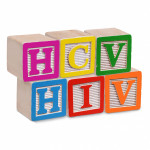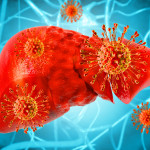There is a link between opioid substitution therapy (OST) and psychotherapy and a lower risk of testing positive for HIV following a hepatitis C virus (HCV) diagnosis.
Researchers analyzed data from the British Columbia Hepatitis Testers Cohort, which accounts for all of the Canadian province’s approximately 1.5 million residents tested for HCV or HIV between 1990 and 2013. The database includes information on individuals’ medical visits, hospitalizations, cancers, prescriptions and deaths. The investigators tracked those who tested positive for HCV antibodies (a subsequent test for HCV’s genetic materials detects a chronic infection) to see whether they later tested positive for HIV.
Findings were presented in a poster presentation at 2017 Conference on Retroviruses and Opportunistic Infections (CROI) in Seattle.
Out of 36,163 people who tested positive for HCV antibodies but negative for HIV upon entering the cohort, 2,255 (6.2 percent) were later diagnosed with HIV during 266,010 cumulative years of follow-up. This translated to a 0.82 percent per year HIV diagnosis rate. The annual HIV diagnosis rate was 1.07 percent among those who tested positive for HCV antibodies and 0.82 percent among those who had a chronic hep C infection.
Overall, the HCV-positive individuals who were diagnosed with HIV received their diagnosis for the latter virus after a median 3.36 years. The time was shorter for those only diagnosed with HCV antibodies (2.78 years) compared with those with a chronic HCV infection (3.52 years); this difference was statistically significant, meaning it is unlikely to have occurred by chance.
After adjusting the data for the number of HIV tests, the researchers found that the following factors were associated with the following degrees of increased risk of testing positive for HIV: being an injection drug user, 1.42-fold; having hepatitis B virus (HBV), 1.37-fold; being a man who has sex with men, 5.91-fold; living in an urban area, 1.4-fold. Undergoing OST and psychiatric counseling were associated with a respective 61 percent and 52 percent reduction in the risk of an HIV diagnosis.
To read the conference abstract, click here.






Comments
Comments